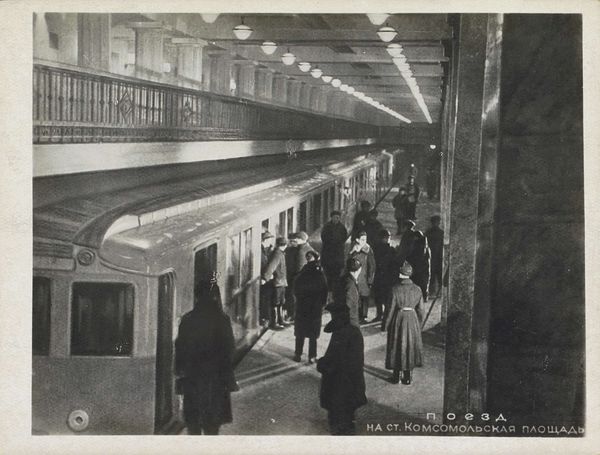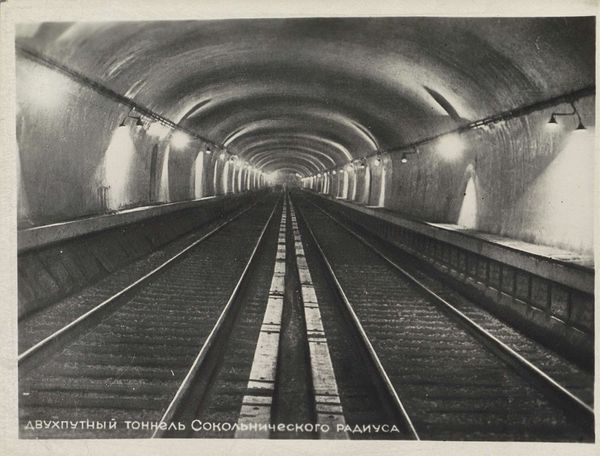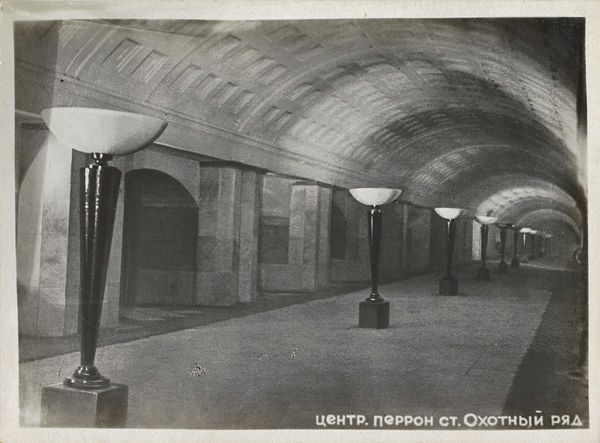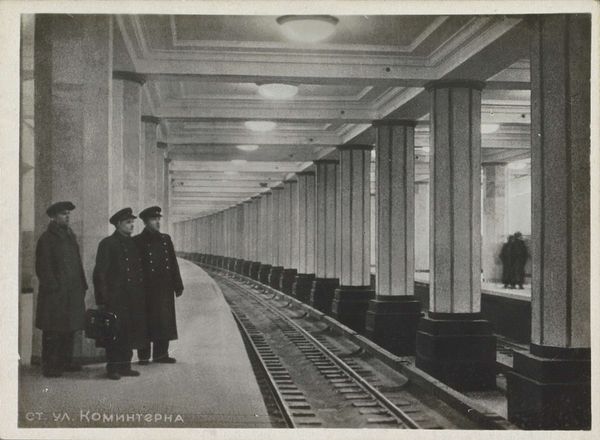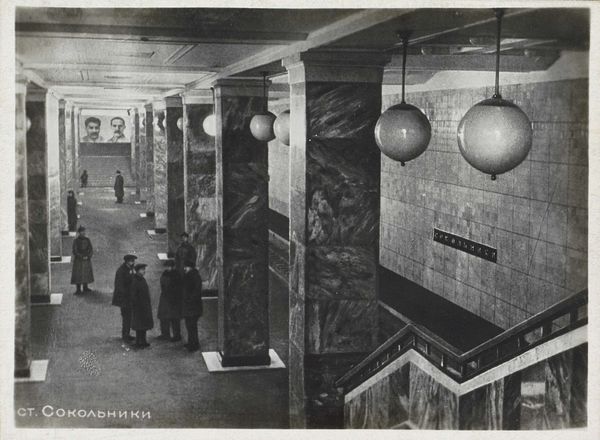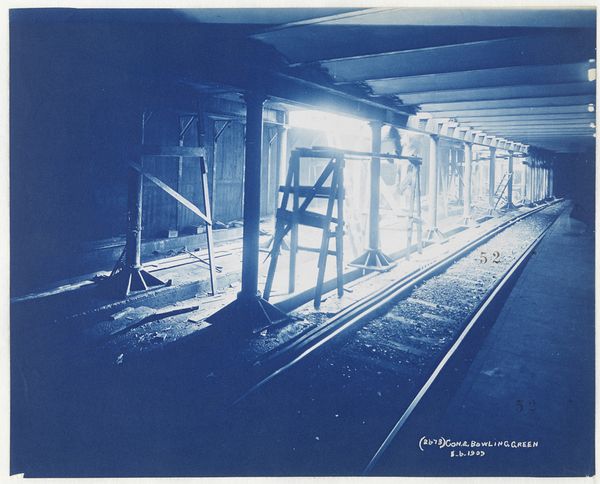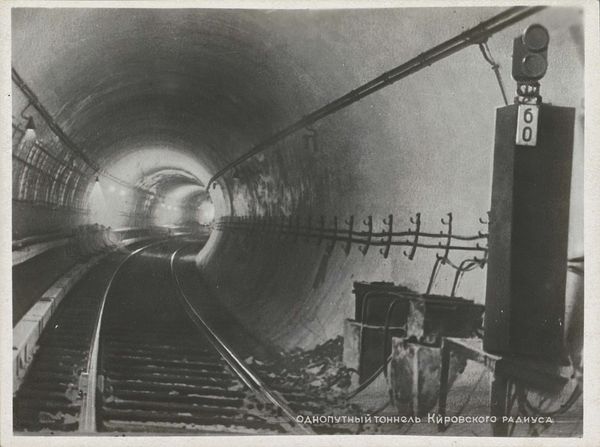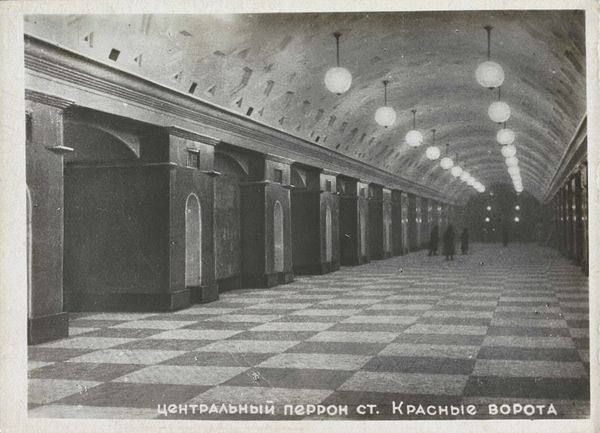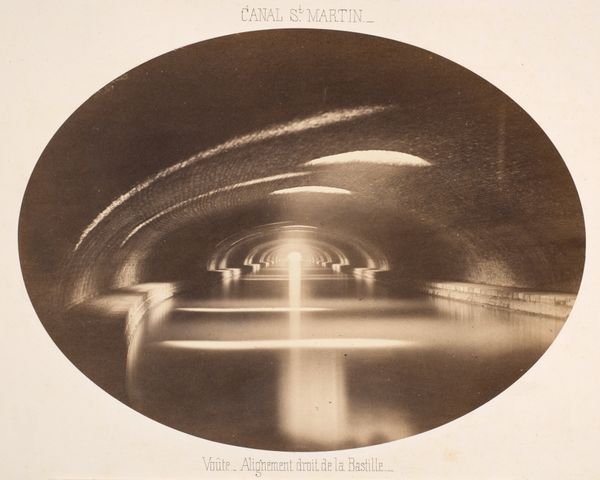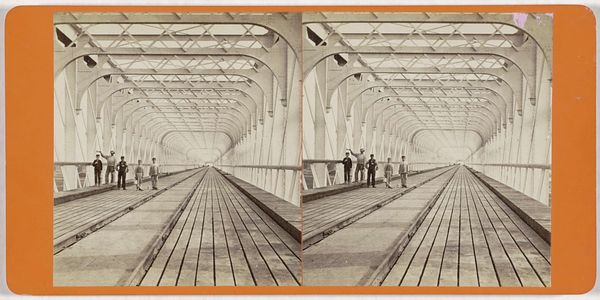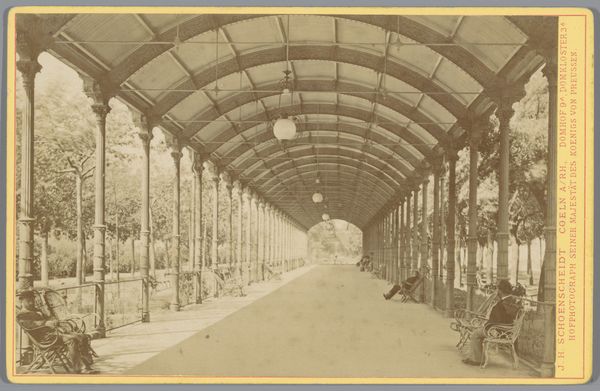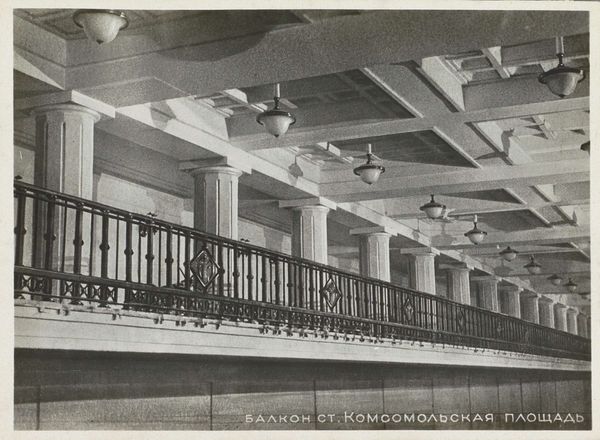
print, photography, gelatin-silver-print
#
pencil drawn
# print
#
soviet-nonconformist-art
#
photography
#
gelatin-silver-print
#
cityscape
#
realism
Dimensions: height 83 mm, width 118 mm
Copyright: Rijks Museum: Open Domain
Curator: Here we have "Interior of Lenin Library Metro Station," a gelatin silver print likely created between 1930 and 1935. It’s an interesting window into early Soviet infrastructure and life, a glimpse into the everyday monumentalism the regime sought to project. Editor: It’s quite striking, isn't it? The high, arching ceiling receding into the distance, the almost brutal symmetry, and then punctuated by these strong spherical lights. There’s a clear intention toward vastness and, frankly, a kind of austere beauty. Curator: Precisely! The Moscow Metro was one of Stalin's most ambitious architectural projects, intended as a symbol of technological progress and socialist achievement. It served both a practical purpose and a propaganda one, showcasing the might and efficiency of the Soviet Union. Editor: And you can see that. Look at the play of light on the wet platform surface. There is starkness, too; those anonymous figures standing, waiting… Their scale, their positioning – it gives a somewhat mournful or melancholy air, doesn’t it? Even though it depicts progress. Curator: I would say so, too. Though it’s partly the aesthetic of early photography, of course. But in many ways the artist, Mospo Sostawitol, subtly captured some ambivalence, given that the Soviet Utopia always remained a promise. A slightly unreachable platform. Editor: Sostawitol, you say? Well, I notice also how he uses these geometric repetitions to reinforce the architecture’s imposing nature; for example, the straight lines converging, pushing your eye deeper and deeper into that slightly gloomy distance. This work truly succeeds in evoking monumentality in what otherwise is a very quotidian public setting. Curator: Indeed. I think works such as this capture a particularly dynamic point in the history of the Soviet Union, the optimism colliding against reality, and this photograph really opens the door for audiences today to think critically about the regime’s legacy. Editor: Agreed. It is a photograph about a place, a point of transit, that manages to suspend you between somewhere and somewhere else—both in reality and ideal. Very powerful, indeed.
Comments
No comments
Be the first to comment and join the conversation on the ultimate creative platform.
